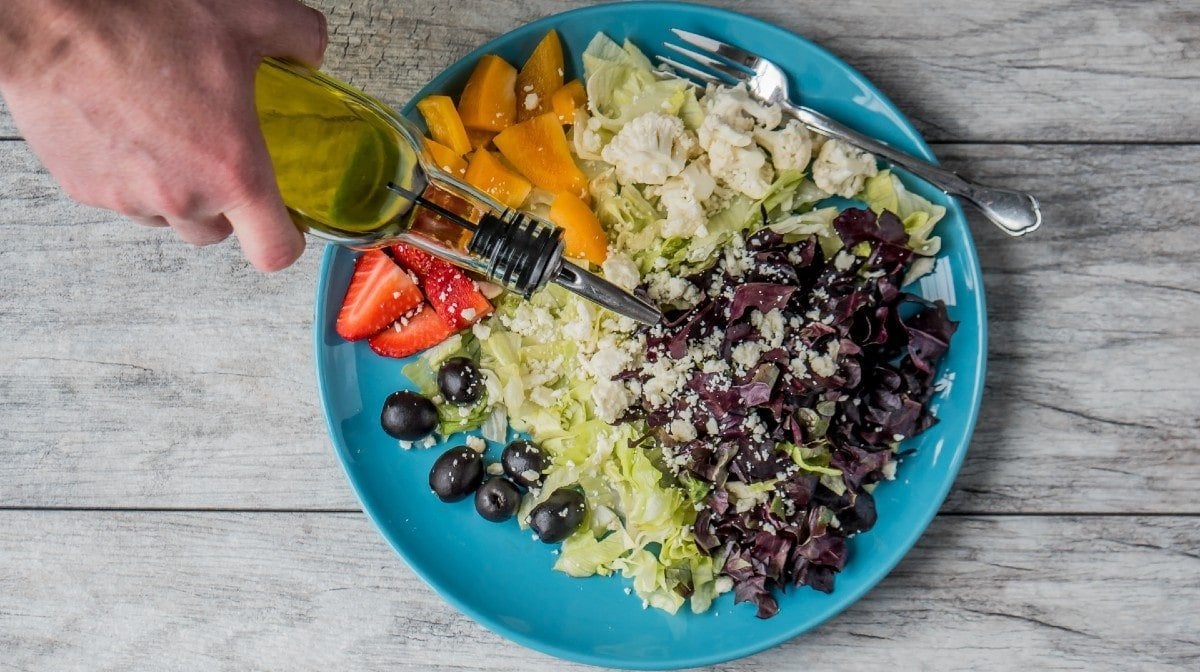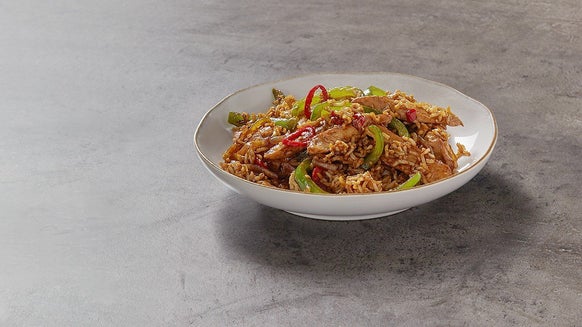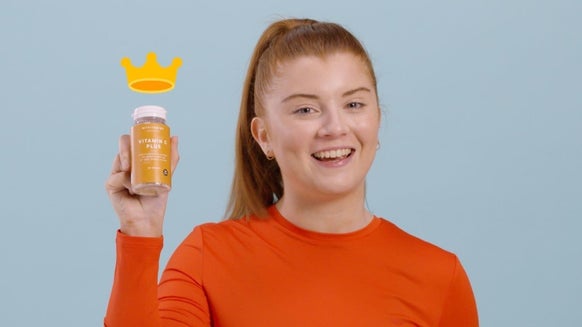
Plant sterols are a fascinating compound found in plants which have an amazing role in the reduction of the “bad cholesterol”, or LDL. They occur naturally in many foods and are often added to foods to make them healthier (such as margarine, orange juice and cereals).
- What are plant sterols?
- Plant sterols sources
- How do plant sterols affect cholesterol?
- Are plant sterols anti-oxidants?
- Age and plant sterols
- Plant sterols side effects
What are plant sterols?
For clarity, the term stanol (rather than sterol) is used to describe saturated sterols which have no double bond in their sterol ring structure.
They also resemble cholesterol in their primary biological functions, and it’s these similarities which give phytosterols some of their health benefits.
Plant sterols sources
Vegetable oils and fats
Cereals, grains and nuts
How do plant sterols affect cholesterol?
Plant sterols and cholesterol
Are plant sterols anti-oxidants?
The clinical and economic benefits of dietary modifications to counter cardiovascular disease, alongside physical activity modification and cholesterol lowering drugs, continues to grow and plant sterols have a large place in public health recommendations and guidelines.
Age effects on plant sterol benefits
It should be recognised that the benefits of plant sterols do differ across age groups.
14% reduction of LDL cholesterol for those aged 50-59 years old.20,21,27,28 9% reduction of LDL cholesterol for those aged 40-49 years old.29.32 11% reduction of LDL cholesterol for those aged 30-39 years old.29,31,33,34
It’s important to note that whilst the 30–39-year-olds actually had a higher percentage reduction of LDL cholesterol, the actual amount of change was less than the 40–49-year-old group (because they had more cholesterol to start with).
Plant sterols side effects
Take home message
With cholesterol potentially affecting your heart it's very much worthwhile examining how you can modify your diet to make yourself healthier. If you want to focus on foods to support your heart health, plant sterols lower cholesterol.
While whole food sources of plant sterols lower cholesterol effectively, if you don't like fruits, salads and vegetables, why not add grains and cereals or even shellfish to get more of these heart protective compounds? Your heart will thank you for it!

Claire is a Registered Dietitian through the Academy of Nutrition and Dietetics and a board-certified Health and Wellness Coach through the International Consortium for Health and Wellness Coaching. She has a Bachelor of Science in Biology and a Master’s degree in Clinical Dietetics and Nutrition from the University of Pittsburgh.
Talking and writing about food and fitness is at the heart of Claire’s ethos as she loves to use her experience to help others meet their health and wellness goals.
Claire is also a certified indoor cycling instructor and loves the mental and physical boost she gets from regular runs and yoga classes. When she’s not keeping fit herself, she’s cheering on her hometown’s sports teams in Pittsburgh, or cooking for her family in the kitchen.
Find out more about Claire’s experience here.
- Law, M., 2000. Plant sterol and stanol margarines and health. Bmj, 320(7238), pp.861-864.
- Akihisa T, Kokke W and Tamura T, Naturally occuring sterols and related compounds from plants, in Physiology and Biochemistry of Sterols. Ed by Patterson GW and Nes WD. American Oil Chemists’ Society, Champaign, IL, pp 172±228 (1991).
- Piironen, V., Lindsay, D.G., Miettinen, T.A., Toivo, J. and Lampi, A.M., 2000. Plant sterols: biosynthesis, biological function and their importance to human nutrition. Journal of the Science of Food and Agriculture, 80(7), pp.939-966.
- Nes WR, Multiple roles for plant sterols, in The Metabolism, Structure and Function of Plant Lipids. Ed by Stumpf PK, Mudd BJ and Nes WR. Plenum, New York, pp 3±9 (1987)
- H?c-Wydro, K., Wydro, P., Jagoda, A. and Kapusta, J., 2007. The study on the interaction between phytosterols and phospholipids in model membranes. Chemistry and physics of lipids, 150(1), pp.22-34.
- Dufourc, E.J., 2008. The role of phytosterols in plant adaptation to temperature. Plant signaling & behavior, 3(2), pp.133-134.
- Gylling H and Miettinen TA, Phytosterols, analytical and nutritional aspects, in Functional Foods. A new Challenge for the Food Chemist. Ed by Lasztity R, Pfannhauser W, Simon- Sarkadi L and ToÈmoÈskoÈ zi S. Publishing Company of TUB, Budapest, pp 109 (1999).
- Czybayko F, Beumers B, Lammsfuss S, LuE?tjohann D and von Bergmann KA, A simpli®ed micro-method for quanti®cation of fecal excretion of neutral and acidic sterols for outpatient studies in humans. J Lipid Res 32:1861±1867 (1991).
- Dutta PC and Appelqvist L-AÊ , Saturated sterols (stanols) in unhydrogenated and hydrogenated edible vegetable oils and in cereal lipids. J Sci Food Agric 71:383±391 (1996).
- Morton GM, Lee SM, Buss DH and Lawrence P, Intakes and major dietary sources of cholesterol and phytosterols in the British diet. J Human Nutr Dietet 8:429±440 (1995).
- 11. Wojciechowski ZA, Biochemistry of phytosterol conjugates, in Physiology and Biochemistry of Sterols. Ed by PattersonGWand Nes DW. American Oil Chemists’ Society, Champaign, IL, pp 361±395 (1991)
- De Vries JHM, Jansen A, Kromhout D, van de Bovenkamp P, van Staveren WA, Mensink RP and Katan MB, The fatty acid and sterol content of food composites of middle-aged men in seven countries. J Food Comp Anal 10:115±141 (1997).
- Phillips KM, TarragoÂ-Tani MT and Stewart KK, Phytosterol content of experimental diets differing in fatty acid composition. Food Chem64:415±422 (1999)
- Schothorst RC and Jekel AA, Oral sterol intake in the Netherlands: evaluation of the results obtained by GC analysis of duplicate 24-h diet samples collected 1994. Food Chem64:561±566 (1999).
- Lin DS, Connor WE and Phillipson E, Sterol composition of normal human bile. Effects of feeding shell®sh (marine) sterols.Gastroenterology 86:611±617 (1983).
- Law, M.R., Wald, N.J., Wu, T., Hackshaw, A. and Bailey, A., 1994. Systematic underestimation of association between serum cholesterol concentration and ischaemic heart disease in observational studies: data from the BUPA study. Bmj, 308(6925), pp.363-366.
- Hu FB, Manson JE, Willett WC. 2001. Types of dietary fat and risk of coronary heart disease: a critical review. J Am Coll Nutr 20:5_19.
- Pollak OJ and Kritchevsky D, Sitosterol, inMonographs on Atherosclerosis, Vol 10, Ed by Clarkson TB, KritchevskyDand Pollak OJ. Karger,Basle, pp 1±219 (1981).
- Best MM, Duncan CH, Van Loon EJ, Wathen JD, Lowering of serum cholesterol by the administration of a plant sterol.Circulation 1954. ;10 : 201-206.
- Gylling H, Radhakrishnan R, Miettinen TA. Reduction of serum cholesterol in postmenopausal women with previous myocardial infraction and cholesterol malabsorption induced by dietary sitostanol ester margarine :women and dietary sitostanol.Circulation 1997. ; 96 :4226-4231.
- Gylling H, Miettinen TA. Serum cholesterol and cholesterol and lipoprotein metabolism in hypercholesterolaemic NIDDM patients before and during sitostanol ester-margarine treatment.Diabetologia 1994. ;37 : 773-780.
- Jones PJH, McDougall DE, Ntanios F, Vanstone CA. Dietary phytosterols as cholesterol-lowering agents in humans. Can JPhysiol Pharmacol 1997. ; 75 :217-227.
- Lees AM, Mok HYI, Lees RS, McCluskey MA, Grundy SM. Plant sterolsas cholesterol-lowering agents : clinical trials in patients with hypercholesterolemia and studies of sterol balance.Atherosclerosis 1997. ;28 : 325-338
- Heinemann T, Kullak-Ublick A, Pietruck B, von Bergmann K.Mechanisms of action of plant sterols on inhibition of cholesterol absorption.Eur J Clin Pharmacol 1991. ;40(suppl 1) :59S-63S.
- Shahidi F, Natural Antioxidants. AOCS Press,Champaign, IL, pp 1±11 (1996)
- Miettinen TA, Puska P, Gylling H, Vanhanen H, Vartianen E. Reduction of serum cholesterol with sitostanol-ester margarine in a mildly hypercholesterolemic population. N Engl J Med1995. ; 333 :1308-1312.
- Gylling H, Miettinen TA. Cholesterol reduction by different plant stanol mixtures and with variable fat intake.Metabolism 1999. ;48 : 575-580.
- Weststrate JA, Meijer GW. Plant sterol-enriched margarines and reduction of plasma total- and LDL-cholesterol concentrations in normocholesterolaemic and mildly hypercholesterolaernic subjects.Eur J Clin Nutr1998. ;52 : 334-343.
- Hallikainen MA, Uusitupa MI. Effects of 2 low-fat stanolester-containing margarines on serum cholesterol concentrations as part of a low-fat diet in hypercholesterolemic subjects. Am J ClinNutr 1999. ; 69 :403-410.
- Vanhanen HT, Blomqvist S, Ehnholm C, et al. Serum cholesterol, cholesterol precursors, and plant sterols in hypercholesterolemic subjects with different apoE phenotypes during dietary sitostanol ester treatment.J Lipid Res 1993. ;34 : 1535-1544.
- Vanhanen HT, Kajander J, Lehtovirta H, Miettinen TA. Serum levels, absorption efficiency, faecal elimination and synthesis of cholesterol during increasing doses of dietary sitostanol esters in hypercholesterolaemic subjects. Clin Sci (Colch) 1994. ;87 : 61-67.
- Hendriks HFJ, Weststrate JA, van Vliet T, Meijer GW. Spreads enriched with three different levels of vegetable oil sterols and the degree of cholesterol lowering in normocholesterolaemic and mildly hypercholesterolaemic subjects. Eur J Clin Nutr1999. ; 53 :319-327.
- Niinikoski H, Viikari J, Palmu T. Cholesterol-lowering effect and sensory properties of sitostanol ester margarine in normocholesterolemic adults.Scand J Nutr 1997. ;41 : 9-12.
- Law MR, Wald NJ, Thompson SG. By how much and how quickly does reduction in serum cholesterol concentration lower risk of ischaemic heart disease ? BMJ 1994. ;308 : 367-373
- Glueck CJ, Speirs J, Tracy T, Streicher P, Illig E, Vandegrift J.Relationships of serum plant sterols (phytosterols) and cholesterol in 595 hypercholesterolemic subjects, and familial aggregation of phytosterols, cholesterol, and premature coronary heart disease in hyperphytosterolemic probands and their first-degree relatives. Metabolism 1991. ; 40 :842-848.
- Plat J, van Onselen ENMand Mensink RP, Dietary plant stanol ester mixtures. Effects on safety parameters and erythrocyte membrane fatty acid composition in non-hypercholesterolaemic subjects. Eur Heart J Suppl 1:S58±S63 (1999).
- Plat J and Mensink RP, Vegetable oil based versus wood based stanol ester mixtures: effects on serum lipids and hemostatic factors in non-hypercholesterolemic subjects. Atherosclerosis148:101±112 (2000).
- Omenn GS, Goodman GE, Thornquist MD, et al. Effects of a combination of beta carotene and vitamin A on lung cancer and cardiovascular disease. N Engl J Med 1996. ;334 : 1150-1155.






